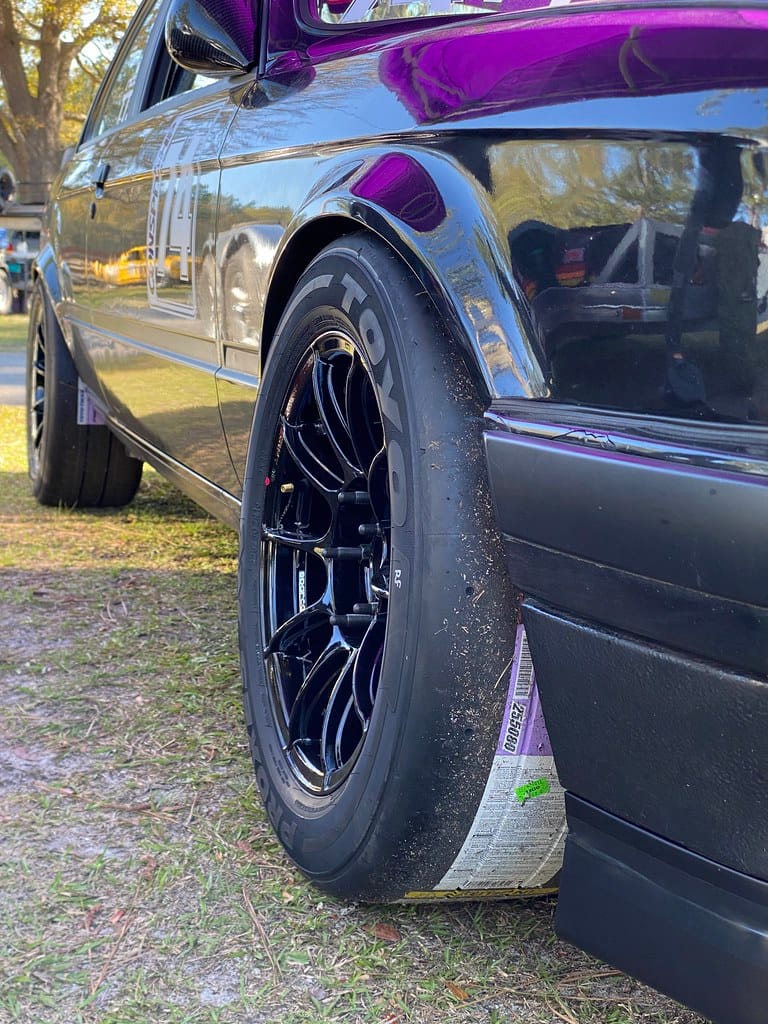If you're new to competitive racing and want to get the most out of your tires, this introductory racing tire guide is for you. With any luck, you'll soon be standing on the podium and winning contingency prizes.
Need help deciding what tires to run? Grassroots Motorsport's Ultimate Track Tire Guide is as good as it gets. I've also written about NASA ST/TT tire classification parity here.
R-Comp Tire Expectations
Coming from track days and "DE" life, you might be surprised to find entry-level racing tires similar to what you are used to. DOT-legal slick tires such as the Toyo RR and Hoosier R7 are not unrecognizable when coming from "enduro 200tw" and similar types of track day-appropriate tires.
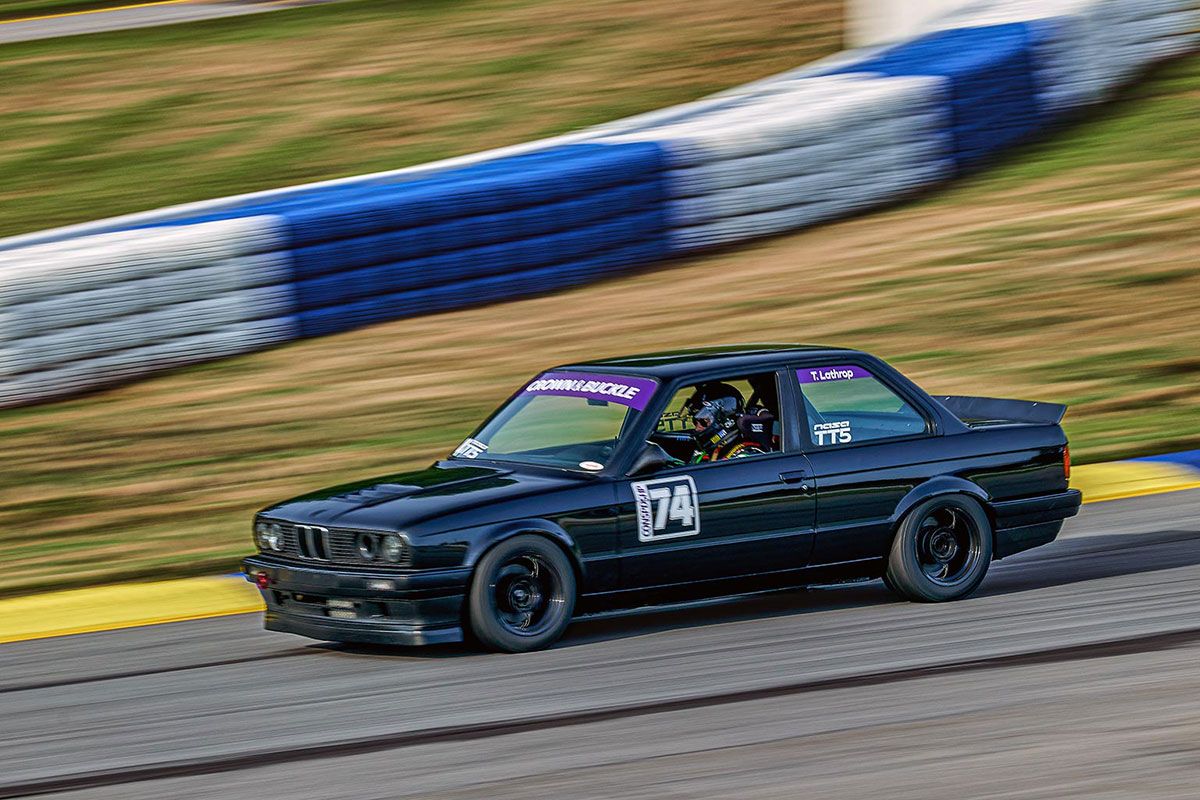
Getting used to the higher grip levels of "R-comp" racing tires won't take too long. Many racing tires (Hoosiers, in particular) have less auditory feedback than street-oriented tires. You will need to rely more on the steering feel in your fingertips and the yaw as the car pivots around your hips to realize what the car is doing versus having audible warnings when the tire breaks away.
As discussed later in this article, you probably won't take the tires down to the cords anymore. The tires will have slowed down due to heat cycling long before the tread is gone.
Heat Cycles & Shaving
Heat cycles are the number of times your tires reach operating temperature and are cooled down again. The duration of the session doesn't matter here. If you got the tires hot and the session was red-flagged on the second lap, that still counts as a heat cycle.
Without getting into the science of why heat cycles matter, know that the tires degrade slightly each time you complete a heat cycle. Some tires are more susceptible to this than others. Hoosiers are notorious for dropping off a lot after just a few heat cycles. By the 10th heat cycle, a Hoosier A7/R7 might be seconds slower than it was, whereas a Toyo RR may only be a few tenths slower.
The degree to which this matters is largely up to you, but you must be aware of it. Some racers will only race on tires with fewer than 3 heat cycles, whereas others will run them for 30-40.
Pro tip: if your car feels particularly loose or pushy and your tires are old, it is not worth chasing the car's setup around trying to make it work again if you plan on buying new tires soon. As a tire degrades, it exposes the tendency of the chassis setup. An understeering car will get even more pushy as the tires age out, and an oversteering car will get even more loose.
Heat Cycling Service
When you purchase new tires, you may have the option to pay to have the tires heat cycled. This can help with the pace and longevity of the tire by exposing it to a heat cycle and then letting it recover for days (or weeks). The recovery process allows the rubber bonds to relink more uniformly (source). For some people, the added expense is worth it. You can achieve the same effect by taking the tires out for a test session and then resting them for at least 24 hours before you use them again.
Shaving Tires
Since racers tend to discard their tires before the tread is depleted, shaving tires is an option. Shaving means that some portion of the tread is removed from the tire before use; often, half the tread or more is removed (for example, shaving a 10/32" tire to 4/32").
Shaving the tire reduces the squirm allowed by the large, thick tread blocks. The effect is more apparent on tires that start with more tread depth and when they have more grooves and blocks in the tread pattern (which can flex).
For example, a Hoosier R7 starts at 4/32" and has almost no tread pattern, so it doesn't benefit much from shaving (although people do it!). On the other hand, a Kuhmo V730 starts at 8.5/32" and it has numerous shallow tread blocks that disappear entirely by about 3/32". The Kumho will benefit from shaving.
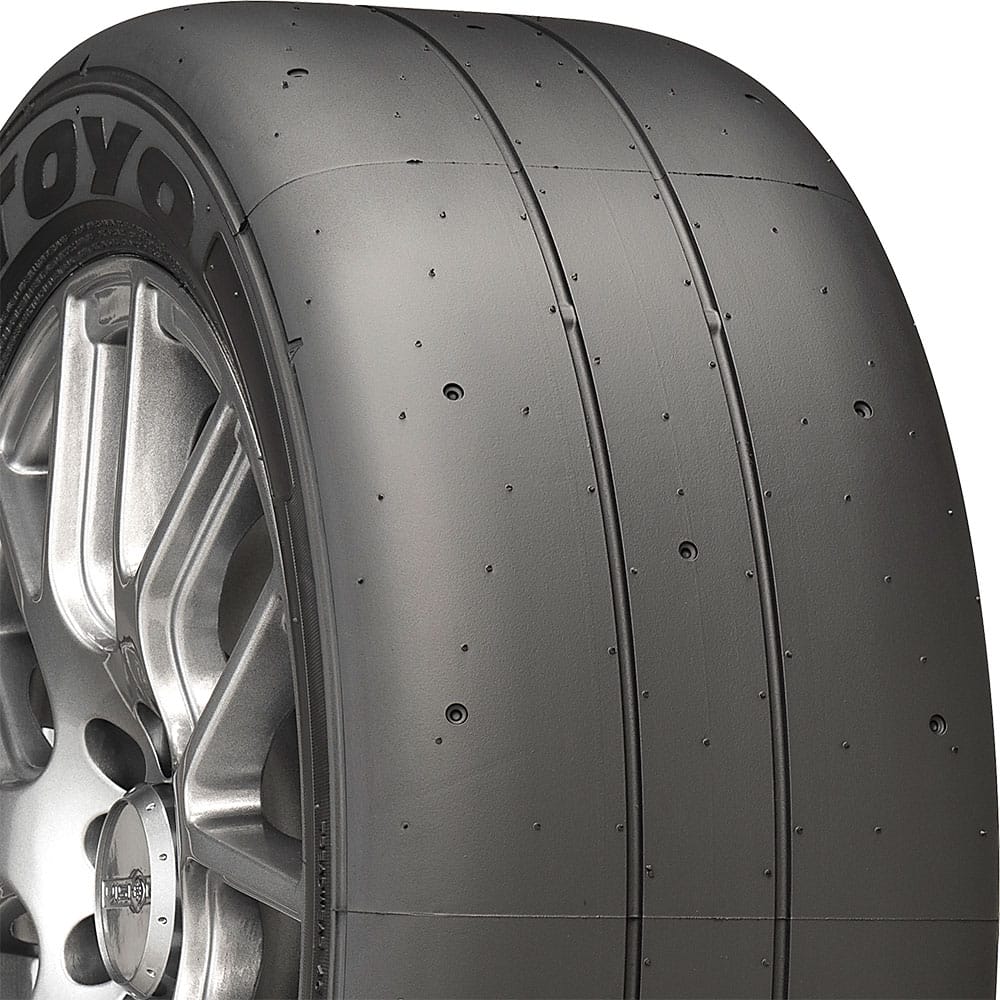
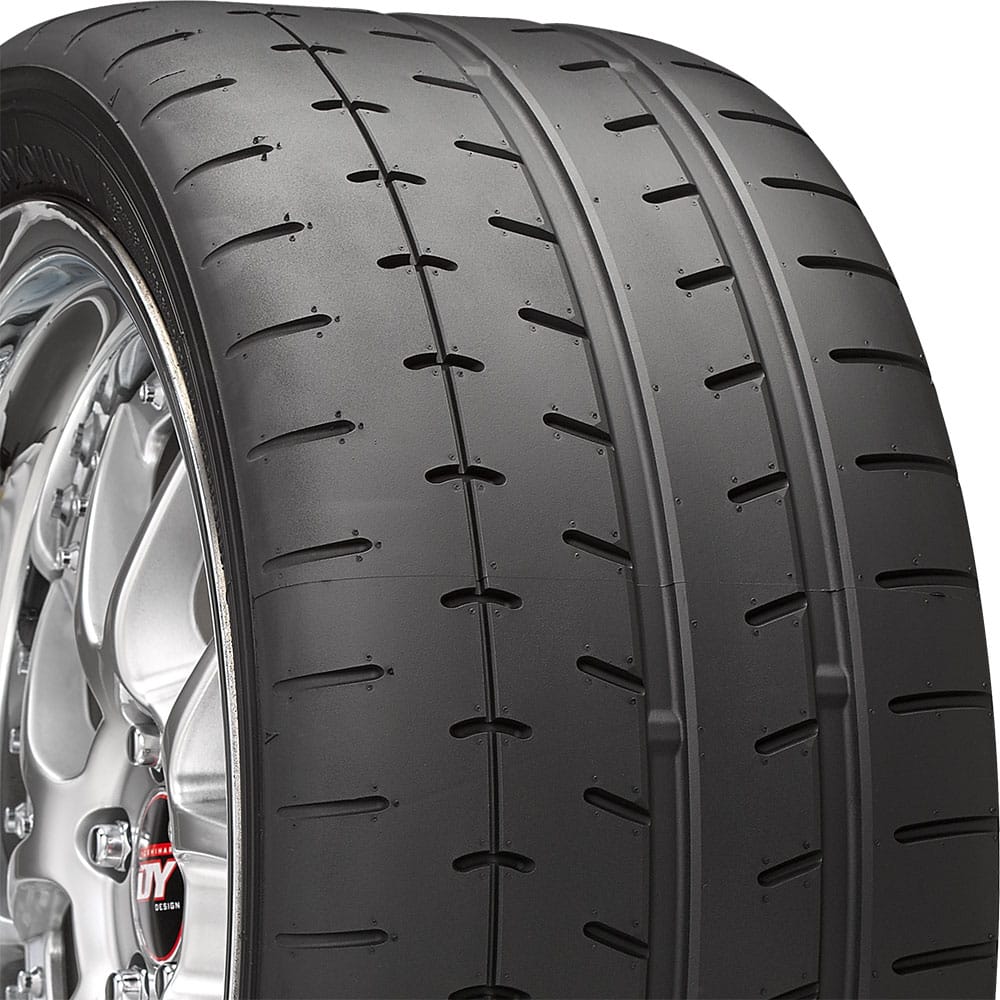
The Toyo (left/top) has 3.7/32" tread, and the Yokohama has 7/32" (right/bottom). The tread depth and tread pattern differences mean the Toyo feels much more crisp and responsive.
Pressures & Data
Tire pressures are one of the most critical aspects of your car's setup and maintenance at the race track. However, I find that they are often ignored, or if they are checked, the racer is just "going through the motions" and not actually understanding what they can and should be doing with tire pressures.
Pressures are one of the easiest setup changes to make, and proper pressures can improve lap times and the driver's confidence in the car.
Pro Tip: Remember that if you cooled down the car before coming in, your pressures will have already dropped 1-3 PSI before checking them in the paddock. Most tire manufacturers publish recommended air pressures, both cold and hot, for competition tires. Use them as a starting point, but don't be surprised if what you find works best deviates quite a bit from their recommendation.
Another data point worth checking is using a probe pyrometer to measure the temperatures across the tire (generally, the inner edge, center, and outer edge). These measurements can help inform camber and toe changes but shouldn't be taken as gospel. Remember that tires cool rapidly when performing a cool-down lap. In particular, the outer edge of a tire is tricky to measure: it may not even be in contact with the ground while driving in a straight line, and it also receives the most cooling airflow.
I use pyrometer data to help validate a hunch about the car's setup, but a surprise finding isn't going to make me scramble to make a change to "correct" the issue.
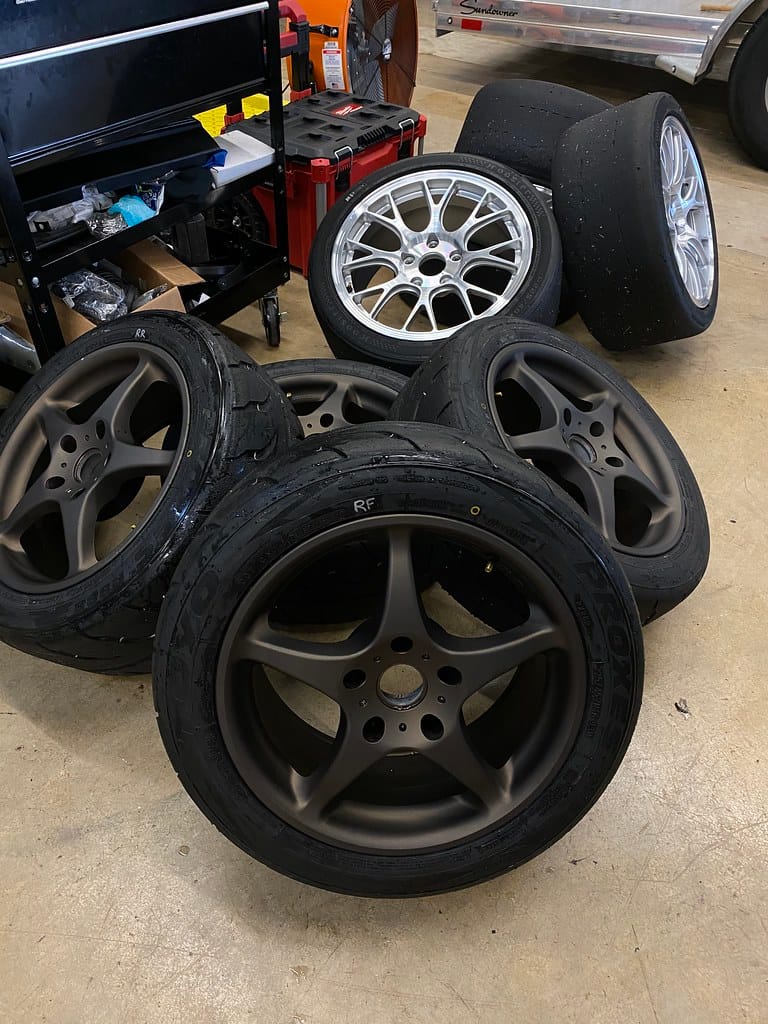
Balancing Pace & Lifespan
This is where budget and your desire to be competitive come into play. Tires are not cheap, and coming out with a new set every weekend or every other weekend isn't going to be in the cards for most drivers. Even if you're winning tires through a contingency program (Toyo's is the best, though Maxxis' is pretty good), you might choose to stockpile your winnings rather than bringing out a new set every time you win.
On average, most racers will relegate their tires to only practice/warmup after between 10 and 20 heat cycles. Undoubtedly, some drivers will run a whole season on one set of tires and still be competitive. If that is you, more power to you. If you don't plan on buying new tires for a while, it will be worth chasing your car's setup throughout the year as the tires degrade.
For racers who choose to retire their tires sooner rather than later, you can probably sell them for a decent return. Scrubs generally mean one to five-ish heat cycles and could bring in 40-50% of their retail cost. Tires in the 10+ heat cycle range might still have life in them for someone else, but the sale price will be more like 20% (or less) of the retail cost.
If they are torn up and cycled out, either give them away or recycle them at the tire shop when your new set is mounted.
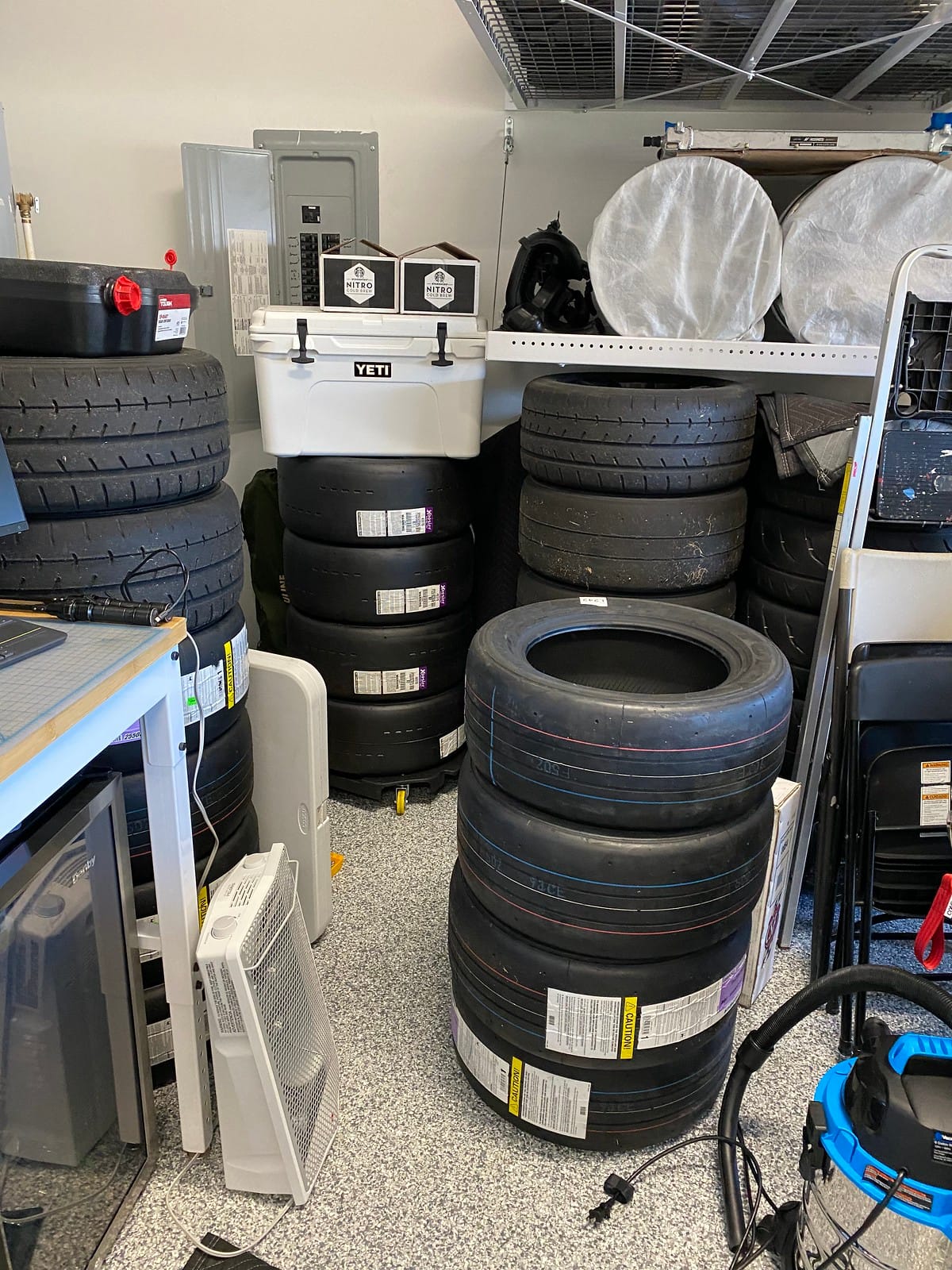
Go Forth and Win
Hopefully, you found this insightful and helpful. If it was below your knowledge level, but you know an up-and-coming racer who would benefit from it, please share the article with them.


